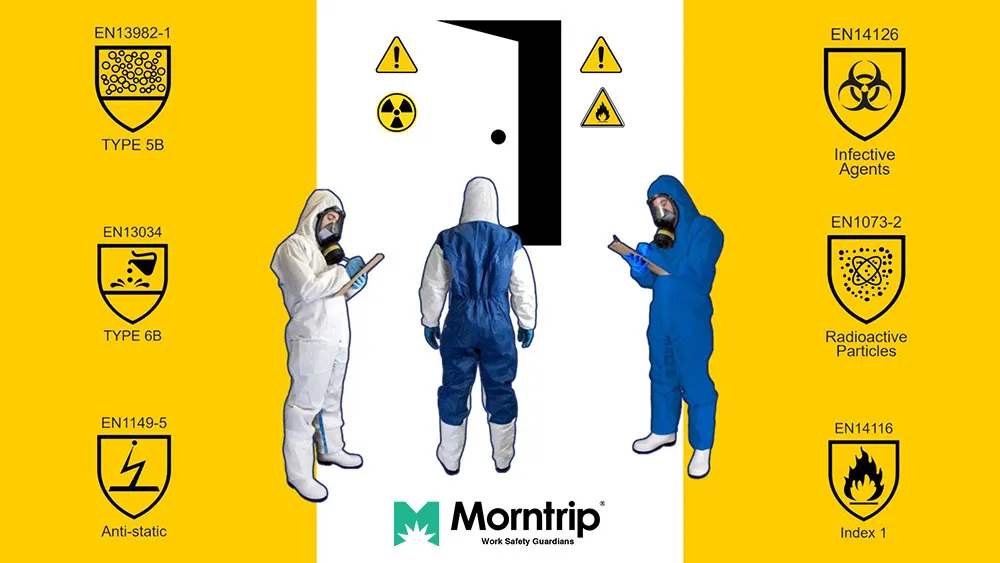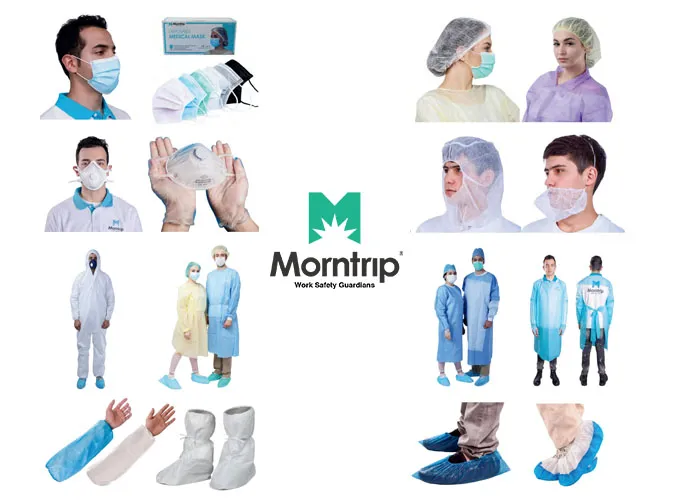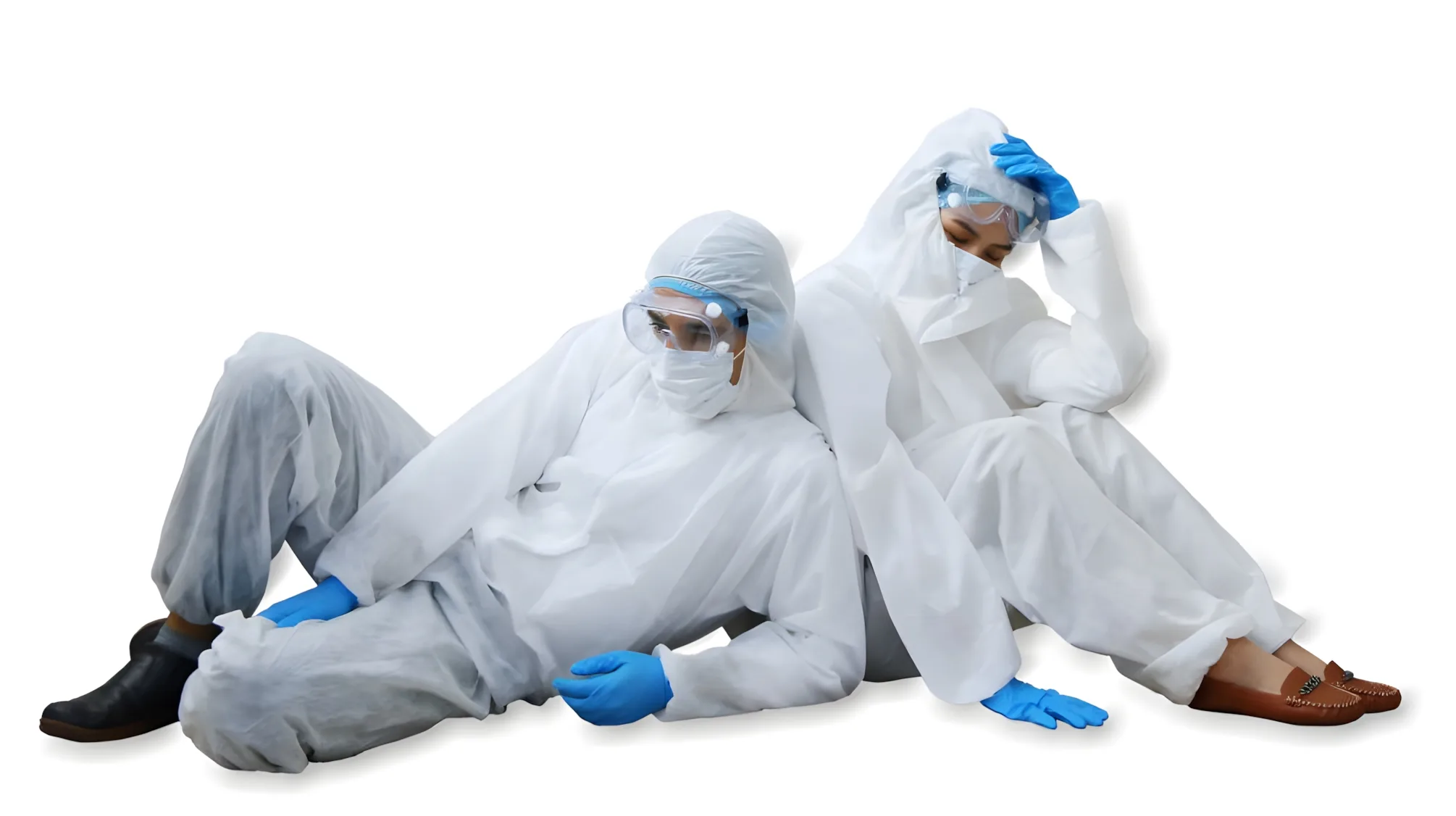It’s frustrating when a product approved in one region can’t enter another market. For medical PPE makers, that’s a common problem. The EU and the USA employ different testing systems and certification standards for medical coverall regulations. This article explains the main differences and helps you understand how to meet both sets of requirements with one compliant design.
What Are Medical Coveralls? Key Functions and Standards
Medical coveralls are a type of personal protective equipment (PPE). They protect healthcare workers from infectious hazards. These hazards include bloodborne pathogens and airborne viruses. I recommend using coveralls in high-risk medical settings. Examples include isolation wards and surgery rooms where fluid splashes occur.
Essential Features of Medical Coveralls
Barrier Protection: Effective medical coveralls must prevent fluid penetration. Standards like ANSI/AAMI PB70:2012 test the ability to resist body fluids and aerosols.
Comfort Considerations: Healthcare workers wear coveralls for long periods. Based on my experience, you need a balance between effective protection and user comfort. This ensures workers remain productive and safe.
Regulatory Compliance
United States: References standards like ANSI/AAMI PB70:2012.
European Union: Relies on EN 14126 for biohazard protection.
Medical coveralls must meet region-specific requirements. I suggest verifying compliance before entering different markets. This ensures acceptance and use across regions.
The Impact of Global Standardization
Manufacturers must meet region-specific and global tests to market disposable medical coveralls. This supports safe product circulation in both the USA and EU markets. It also simplifies procurement decisions for healthcare organizations worldwide. I believe this global approach creates a safer environment for healthcare workers everywhere.
EU Medical Coverall Suit Standards and Certification
The EU has strict rules for medical coveralls. These rules protect healthcare workers and patients. All disposable coveralls sold in the EU must follow Regulation (EU) 2016/425 on personal protective equipment (PPE). Before you can sell these products, you need CE marking. This mark shows that your product meets all regulatory and technical requirements.
CE Marking Process for Medical Coveralls
I recommend following these six steps to certify medical coveralls in the EU:
Product Classification: First, identify the PPE risk category:
Category I: Minimal risk
Category II: Intermediate risk
Category III: Serious or lethal risk
Risk Assessment: Check for potential health and safety risks. Then determine which essential requirements apply.
Conformity Assessment:
Categories II and III need a Notified Body. This body conducts an EU-type examination (Module B). They review product design, required documents, and test results.
Technical Documentation: Keep a complete technical file for at least 10 years after you place the product on the market.
EU Declaration of Conformity: The manufacturer declares full regulatory compliance.
Affixing CE Mark: Place the CE mark on the suit. This confirms EU authorization for sale.
Harmonized Standards for Medical Coverall Suits in the EU
Based on my experience, EU medical coveralls must meet specific harmonized standards. Each standard targets different exposure risks:
EN 14126: This is the core standard for protection against infectious agents.
It covers resistance to blood, body fluids, and pathogens.
Main test methods:
ISO 16603: Resistance to synthetic blood and body fluids
ISO 22610: Resistance to bacterial penetration
During COVID-19, medical coveralls were often certified to EN 14126 and at least Type 4.
EN ISO 13982-1 (Type 5): This protects against solid airborne particles (e.g., asbestos, pharmaceutical handling).
EN 13034 (Type 6): This offers limited protection against liquid chemical splashes. It’s typical in laboratories.
EN 14605:
Type 3: Full liquid-tight suits. Use these when exposure to strong liquid jets is possible.
Type 4: Spray-tight suits. These protect against liquid spray risks but not direct liquid jets.
EU Classification of Coveralls by Type
| Type | Level of Exposure Risk | Typical Use Case |
|---|---|---|
| Type 3 | Liquid-tight (pressurized jets) | Chemical processing, biohazard cleanup |
| Type 4 | Spray-tight (liquid sprays) | Disinfection, chemical cleanups |
| Type 5 | Protection from solid particulates | Asbestos, pharmaceutical powders |
| Type 6 | Limited protection, light sprays | Laboratory work, maintenance |
EN 14126 can apply to Types 3, 4, 5, or 6. It depends on your combined biological and chemical protection needs. For example, “Type 4-B” means spray-tight with infective agent resistance.
Certification Oversight and Transparency
Certified medical coveralls must show both the EN standard and performance Type (e.g., “EN 14126 Type 4-B”). They also need the CE mark.
For Categories II and III, over 120 EU Notified Bodies can perform testing and market surveillance (as of 2024). I suggest checking the official EU database to find an authorized body.
These Notified Bodies ensure ongoing compliance. They maintain the integrity of the EU market.
Legal and Technical Takeaways
CE Marking: This is a legal requirement for market entry.
Regulatory Basis: The regulation is based on Regulation (EU) 2016/425.
Risk-Based Approach: The system classifies PPE by exposure Type (3–6) and by PPE Category (I–III).
Enforced Standards: These include EN 14126, EN ISO 13982-1, EN 13034, and EN 14605. Each has specific test protocols.
Manufacturer’s Duty: You must prepare and keep documents. You’ll need to issue declarations of conformity. For high-risk products, you must undergo regular assessment by Notified Bodies.
USA Medical Coverall Suit Standards and FDA Regulations
Medical coveralls for the US market must follow strict rules and testing standards. These protect healthcare workers and patients. The main reference is AAMI PB70:2012. It groups apparel by fluid barrier performance levels. The FDA (U.S. Food and Drug Administration) applies these rules. They cover any product used in healthcare settings.
AAMI PB70 Barrier Performance Levels for Coveralls
| Level |
Test Methods |
Performance Criteria |
Typical Use Cases |
|---|---|---|---|
| Level 1 (Minimal Risk) |
AATCC 42 (Spray Impact: Water) | Blotter weight gain < 4.5 g (critical zones) | Basic care, standard isolation, visitor gowns |
| Level 2 (Low Risk) |
AATCC 42 + AATCC 127 (Hydrostatic Pressure) | Spray impact < 1.0 g, hydrostatic > 20 cm | Blood draw, suturing, ICU, pathology labs |
| Level 3 (Moderate Risk) |
AATCC 42 + AATCC 127 | Spray impact < 1.0 g, hydrostatic > 50 cm | Arterial blood draw, IV insertion, ER, trauma |
| Level 4 (High Risk) |
ASTM F1671 (Viral Penetration) for gowns ASTM F1670 (Synthetic Blood) for drapes |
No penetration at 2 psi (13.8 kPa) (critical zones) | Surgery, long procedures, and infectious disease scenarios |
Critical zones include the chest, sleeve seams, front seams, and zipper. I recommend paying close attention to these areas during testing.
Seams must match the protective level of the main material. No weak points allowed here.
Sampling: AQL of 4% and RQL of 20%. The FDA requires at least 5 samples for AATCC 42/127. For ASTM F1671, you need 3 samples.
Essential ASTM Test Methods
ASTM F1670 measures synthetic blood penetration resistance. This test applies to surgical drapes and accessories. To pass Level 4, the material must show no penetration at 2 psi (13.8 kPa).
ASTM F1671 checks resistance to viral penetration. It uses bacteriophage Phi-X174 for gowns and coveralls. You need at least 3 specimens per test site.
These tests are mandatory for Level 4 barrier protection claims in the US. Based on my experience, skipping these will delay your FDA approval.
FDA Regulatory Pathway
Device Classification:
Surgical and isolation gowns are Class II medical devices. They need FDA clearance through the 510(k) pathway.
Non-surgical gowns and coveralls are Class I. These are exempt from premarket submission.
510(k) Submission Requirements:
You must show substantial equivalence to an FDA-cleared product that already exists. I suggest identifying your predicate device early in the process.
Provide performance test results using AAMI PB70 and ASTM standards. This documentation is critical.
Ensure full critical zone coverage at your claimed barrier level. The FDA will check this carefully.
Labeling claims (Levels 1–4) must have support from third-party testing. Don’t make claims you can’t prove with test data.
Key Steps for FDA Approval:
First, identify a predicate device. This is your reference point.
Second, conduct barrier testing according to AAMI PB70 and ASTM guidelines. Use accredited labs for the best results.
Third, prepare and submit a technical file. Include tests, specs, and labeling materials. Send this to the FDA.
Fourth, wait for FDA clearance before you distribute in the USA. I recommend building in extra time for possible questions from the FDA.
Testing Summary Table
| Level |
Water Resistance Test |
Hydrostatic Test |
Blood/Viral Test |
Typical Use |
|---|---|---|---|---|
| 1 |
AATCC 42 | N/A | N/A | Basic care, visitor gowns |
| 2 |
AATCC 42 | AATCC 127 (>20 cm) | N/A | Blood draw, ICU |
| 3 |
AATCC 42 | AATCC 127 (>50 cm) | N/A | Arterial draw, ER |
| 4 |
N/A | N/A | ASTM F1671 (gowns) / F1670 (drapes) | Surgery, infectious disease |
If you need to prepare FDA submissions or technical files, I recommend using the test results above. Make sure your label claims match your verified performance data. This alignment is key to getting FDA clearance smoothly.
Key Differences Between EU and USA Medical Coverall Standards
The EU and the USA have different medical coverall standards. Their regulatory approaches differ in philosophy and how they work. I recommend that manufacturers, importers, and healthcare facilities understand these differences. This helps when you need compliance in both markets.
| Aspect | EU System (European Union) | USA System (United States) |
|---|---|---|
| Regulatory Philosophy | Prescriptive and product-focused | Advisory and performance-based |
| Main Regulations | Regulation (EU) 2016/425 and MDR (Medical Device Regulation) | FDA regulations referencing AAMI PB 70 |
| Enforcement Authority | Multiple Notified Bodies authorized by member states | FDA (Food and Drug Administration) central authority |
| Interpretation & Enforcement | Varies by country; enforcement can differ between member states | Uniform nationwide enforcement under one FDA system |
| Testing Focus | Product-based; specific material and garment performance testing | Barrier performance and overall PPE system effectiveness |
| Base Standards | EN ISO 13688 (general); EN 14126 (infectious protection) | AAMI PB 70 (barrier levels 1–4); OSHA PPE ensemble levels (A–D) |
| Classification System | Coverall Types 1–6 (by risk level); Type 5/6 = light hazard protection | AAMI PB 70 Levels 1–4; OSHA Levels A–D for full ensembles |
| Certification Pathway | Requires CE marking; Notified Body review needed from Class I* up | FDA approval through 510(k), De Novo, or PMA processes |
| Testing & Equivalency | EN Type 5/6 ≈ AAMI Level 1–2 (approx.); EN 14126 ≈ AAMI Level 2–3 | No exact equivalence; FDA focuses on total system safety |
| Market Approval Recognition | CE mark required for EU market; no automatic U.S. acceptance | FDA clearance required for U.S. market; no automatic EU acceptance |
| Regulatory Adaptability | Legislative change required for standard updates | Faster reclassification and updates through FDA review |
| Market Surveillance | Decentralized; varies by member state | Centralized; monitored by the FDA’s national office |
Practical Guidance for Manufacturers
Based on industry experience, manufacturers should note that coveralls certified under EN Type 5/6 and EN 14126 generally meet protection expectations for both EU and U.S. markets. However, separate compliance documentation is still required, as each region maintains its own regulatory framework.
The EU system uses fixed classifications based on defined risk categories, while the U.S. framework allows more flexibility to mix and adapt PPE combinations according to specific workplace conditions. Because U.S. standards are performance-based rather than prescriptive, direct equivalence with EU types can be challenging.
Manufacturers should also be aware that the EU’s complex classification structure can sometimes cause confusion about actual protection levels—especially when different protective garments are used together. Clear labeling, technical data sheets, and user training are essential to ensure proper understanding and compliance across markets.
How to Choose the Right Medical Coverall for Compliance and Safety
Provide practical tips for procurement teams and healthcare buyers
Selecting the correct medical coverall is not just about comfort—it’s a critical safety decision. For procurement teams and healthcare buyers, the key is to balance protection, compliance, and supply reliability. Start by clearly identifying your workplace hazards and matching them with the appropriate protective level (for example, EN 14126 for infectious agents or ASTM F1670/F1671 for bloodborne pathogens).
Suggest verifying certifications, supplier documentation, and test reports
Always verify certifications and supplier documentation before purchasing. Ensure that the product bears valid CE or FDA registration, and request independent lab test reports to confirm compliance with standards like EN Type 4/5/6 or ISO 16604. Trusted suppliers should be transparent about testing methods, certification bodies, and production traceability.
Discuss the risks of non-compliant or counterfeit coveralls
Beware of non-compliant or counterfeit coveralls, which often use substandard fabrics or falsified certificates. These products may fail under pressure or allow fluid penetration, exposing healthcare workers to serious infection risks. Reliable sourcing, third-party verification, and careful documentation review are the most effective safeguards against such hazards.
In summary, choosing the right medical coverall requires more than comparing prices or fabric types—it’s about ensuring regulatory compliance and protecting frontline workers. Procurement teams should adopt a checklist-based approach that includes certification verification, documentation review, and supplier audits. By prioritizing compliance and transparency, healthcare organizations can prevent costly safety failures and maintain full protection for their medical staff in every situation.
Future Trends and Final Recommendations in Medical Coverall Standards
The medical coveralls disposable market is changing fast. I see a clear shift toward
harmonizing international standards
between the EU and the USA. This removes barriers in global trade. It makes entry into new markets easier for manufacturers and suppliers. At the same time, it guarantees the same level of protection and product reliability.
Harmonization and Global Regulatory Alignment
Programs like the Medical Device Single Audit Program (MDSAP) are creating unified regulatory requirements for PPE and medical devices across countries. The EU is still adopting this program. But MDSAP lays the groundwork for future cross-market recognition of quality and compliance.
Standard harmonization helps manufacturers a lot. It reduces repeat certifications. It also speeds up responses during healthcare crises. How? It makes supply chains more flexible.
Emerging Innovations in Medical Coveralls
Sustainable Materials: I’m excited to see more biodegradable or recyclable fabrics in disposable medical coverall design. These materials reduce waste. They align with global sustainability goals.
Reusable Coveralls: The rise of reusable medical coveralls gives healthcare facilities a cost-effective option. It’s also better for the environment. These products withstand repeated cleaning and sterilization cycles. They don’t compromise protective performance.
Smart Coveralls: Advanced “smart textile” solutions are under development. These include wearable sensors that monitor environmental hazards or the wearer’s vital signs. This takes workplace safety to a higher level through real-time feedback.
Compliance and Verified Performance
Strict compliance with international standards like the EU Medical Device Regulation (MDR), OSHA, and CDC guidelines ensures high-quality, safe products reach healthcare settings.
Verified third-party testing is critical. I recommend rigorous laboratory testing and documentation. They prove that products meet the demands of real-world use.
Data and Market Insights
The global demand for PPE has increased rapidly in response to recent health emergencies. This exposed vulnerabilities in supply chains. It also revealed inconsistencies between standards.
The medical coverall market will grow further. New technologies drive this growth. So do regulatory developments and increased awareness of sustainability and safety needs.
Based on my experience, I recommend that manufacturers and buyers stay informed of regulations in both target and domestic markets. Adapt to sustainability trends early. Seek products that combine high-level protection with responsible materials and technologies. Analyzing the latest industry reports will help identify opportunities. It will also prepare you for regulatory changes ahead.
Understanding the gap between EU and U.S. medical coverall standards helps you avoid compliance risks and costly delays. By aligning design, materials, and testing with both regulations, you can reach wider markets confidently and protect healthcare workers effectively. If you’re looking to customize or source certified medical coverall suits that meet global standards, feel free to contact us for a professional consultation and competitive quote.








